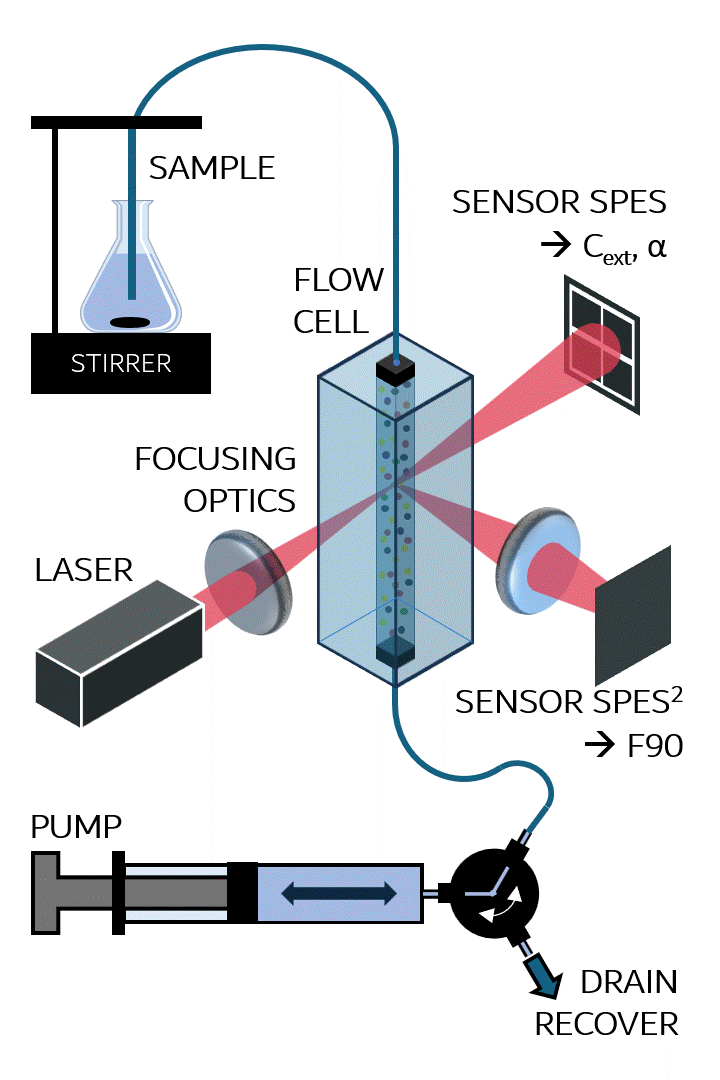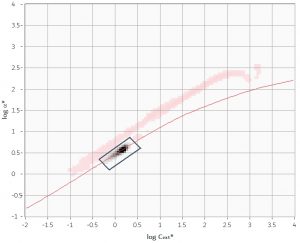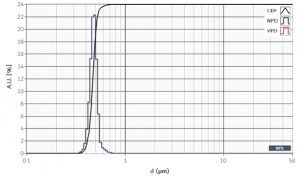The patented Single Particle Extinction and Scattering SPES / SPES² methods uniquely and innovatively exploit the light scattering to characterize single complex particles and particle mixtures in heterogeneous liquids and aerosols. SPES / SPES² and dedicated data analysis algorithms provide more reliable and meaningful information, boosting R&D – QC processes, during lab scale design, industrial production, and advance monitoring of particles in biological, industrial, and environmental fluids. Added-value information is provided thanks to SPES / SPES² and EOS Classizer™ family unique data and analysis libraries:
- Unique Calibration-free Particle Optical Classification, Absolute Particle Size Distribution, Numerical Concentration of each single population irrespectively of polydispersity/composition.
- Quality Control of particle porosity, wetting, aspect ratio, payload, impurities, scraps, and shelf-life without intermediate steps (purification/filtration).
- Measurement of particle behavior and formulation stability directly in real heterogeneous non-filtered target biological, industrial, or environmental fluids.
- Hi-Resolution Continuous Flow Analysis, also coupling SPES / SPES² information with other analytical devices as cFFF separators, small chemical reactors, and pilot line.
- Statistical approaches as Oversize Measure and PCA for Hi-Quality Batch-2-Batch analysis and out-of-specifics identifications in product formulation and production.
How Does SPES/SPES² Work in Brief?
Among the various methods currently employed, optical techniques offer unique advantages, positioning light scattering at the forefront of analytical methods in numerous scientific and industrial applications. However, the multitude of parameters influencing the scattering properties of a particle means that basic measurements of scattering power, or even the extinction of light by a single particle, provide only rough size estimates. This complexity increases when considering a collection of scatterers, necessitating mathematical inversion and addressing ill-posed problems to interpret experimental data.

Unique SPES / SPES² technologies leverage on the synergic and synchronous self-referential interferometric measurements of the scattered wavefront by a single particle in the forward direction and the measurement of light scattered at 90 degrees relative to the incident laser beam. Particles are driven by a laminar fluid flow (liquid or gas depending on the application/Classizer™ version) through the waist region of a tightly shaped laser beam focused in a flow cell.

In forward scattering, the intense transmitted beam interferes with the faint scattered wavefront in the far field, creating an interference pattern with unique intensity modulations on the spatial scale of the beam. This pattern provides multiparametric information about the optical properties of the scattering particle. Simultaneously, the 90-degree scattered intensity is analyzed during the particle’s transit through the scattering region, yielding additional independent information.
Three independent scattering features are retrieved for each single measured particles: (i) the global attenuation caused by the particle, which removes a fraction of the incoming power; (ii) the fringes in the forward self-referential interferometric measurement, resulting from partial constructive and destructive interference proportional to the amplitude of the complex forward dimensionless scattered field S(0); and (iii) the scattered intensity F90.

The Extinction Cross Section Cext , the Polarizability α, along with F90 are thus obtained for each detected, validated, and counted particle through a robust Pulse Shape Analysis scheme, avoiding ill-posed problems like inversion or deconvolution. In a few minutes SPES creates the unique EOS CLOUDS, a unique 3D histograms where data can be represented. Heterogeneous samples produce distinct clouds for each particle population in the EOS CLOUDS, allowing for individual selection, analysis, and comparison.

Particle size distribution, numerical concentration, oversize, and other statistical insights are derived based on the selection, the entire sample, or each time frame acquired in Continuous Flow Analysis (CFA). Statistical methods such as Principal Component Analysis (PCA) can further extract unique information typically inaccessible with current techniques.
